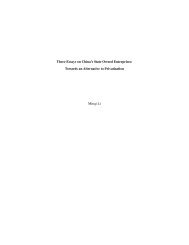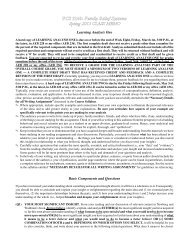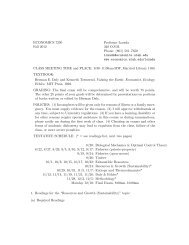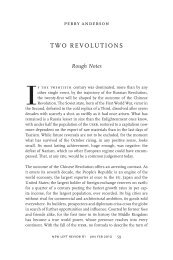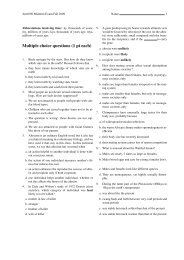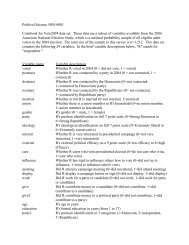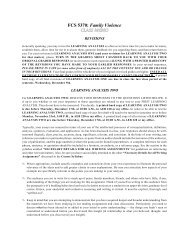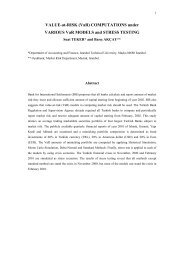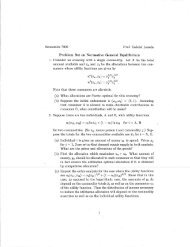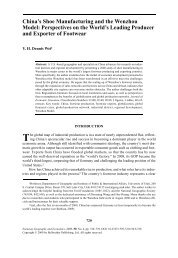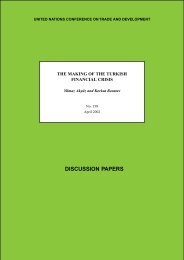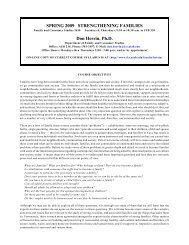Study Guide for the 2 midterm exam
Study Guide for the 2 midterm exam
Study Guide for the 2 midterm exam
Create successful ePaper yourself
Turn your PDF publications into a flip-book with our unique Google optimized e-Paper software.
<strong>Study</strong> <strong>Guide</strong> <strong>for</strong> <strong>the</strong> 2 nd <strong>midterm</strong> <strong>exam</strong> Anth/Biol 5221, 31 October 2011<br />
Mutation, drift, and population size change<br />
1. How are <strong>the</strong> sizes and shapes of gene genealogies affected when <strong>the</strong> population size N<br />
increases or decreases? (Assume selective neutrality.)<br />
2. How are <strong>the</strong> relationships of , S and 2N affected when <strong>the</strong> population size has recently<br />
increased or decreased?<br />
Site frequency spectrum and mismatch distribution<br />
3. Be able to calculate <strong>the</strong>m from data (<strong>for</strong> small, simple data sets), and understand how <strong>the</strong>y<br />
relate to <strong>the</strong> sizes and shapes of gene genealogies.<br />
4. How do <strong>the</strong>y respond to changes of population size (as in #2)?<br />
Neutral <strong>the</strong>ory<br />
5. What is <strong>the</strong> rate of molecular evolution ()?<br />
6. Why does = μ at a neutral site (even when selection strongly affects closely linked sites)?<br />
7. What is <strong>the</strong> central empirical claim of <strong>the</strong> neutral <strong>the</strong>ory?<br />
8. How is a “molecular clock” calibrated (retrospectively)?<br />
Selection in a large population<br />
Each of <strong>the</strong> questions in this section could be framed in different ways. For <strong>exam</strong>ple, we might<br />
give you symbols <strong>for</strong> <strong>the</strong> three genotypic fitnesses and <strong>the</strong> two allele frequencies, and ask <strong>for</strong> an<br />
answer in terms of those symbols. Or we might give you numbers and ask <strong>for</strong> numbers.<br />
9. Assuming fixed, constant fitnesses <strong>for</strong> <strong>the</strong> three genotypes at a biallelic diploid locus (W11,<br />
W12, W22), what is <strong>the</strong> mean fitness of <strong>the</strong> population?<br />
10. What are <strong>the</strong> marginal fitnesses of <strong>the</strong> two alleles?<br />
11. What is next generation’s expected allele frequency (p’ or q’) as a function of <strong>the</strong>se<br />
quantities?<br />
12. How can an observed rate of allele-frequency change be used to estimate <strong>the</strong> relative<br />
fitnesses of two alleles (<strong>for</strong> <strong>exam</strong>ple, s, if we know <strong>the</strong> value of h)? This was <strong>the</strong> subject of some<br />
homework problems.<br />
Mutation-selection balance and <strong>the</strong> genetic load<br />
13. In a large population (i.e., ignoring drift), what is <strong>the</strong> equilibrium frequency of deleterious<br />
recessive alleles (h = 0) at a locus where <strong>the</strong> mutation rate to such alleles is μ per generation and<br />
<strong>the</strong> selective disadvantage of <strong>the</strong> mutant homozygotes is s?<br />
14. What is <strong>the</strong> approximate equilibrium frequency of partially recessive mutations (0 < h < 0.5)<br />
under o<strong>the</strong>rwise identical circumstances?
15. What is <strong>the</strong> mean fitness of a large population where a locus is subject to deleterious<br />
mutations of effect-size s, dominance h, and <strong>the</strong>se mutations occur at rate μ per gene copy per<br />
generation? Why do s and h not appear in <strong>the</strong> answer?<br />
Interactions of mutation, drift and selection<br />
16. What is <strong>the</strong> probability of fixation <strong>for</strong> a newly arisen neutral mutation? Probability of loss?<br />
17. What is <strong>the</strong> approximate fixation probability <strong>for</strong> a newly arisen mutation that is favored by a<br />
selection coefficient of s (relative fitness 1 + s) in <strong>the</strong> homozygous state, and s/2 in <strong>the</strong><br />
heterozygous state? Does <strong>the</strong> population size N affect our answer? If so, how?<br />
18. What is <strong>the</strong> expected rate at which adaptive mutations will fix within a species, given a<br />
certain population size (N), selective advantage (s), and genome-wide rate of mutation (U) to<br />
alleles with advantages of about that size?<br />
19. Why are most of our deleterious mutations (<strong>the</strong> ones segregating at appreciable frequencies)<br />
at least partly recessive?<br />
20. Under what conditions will a deleterious (harmful) mutation have nearly as good a chance of<br />
fixing as a neutral mutation?<br />
21. Do we expect more adaptive evolution in large or small populations? Explain.<br />
22. Do we expect to find more or fewer harmful mutations segregating in a selfing plant species<br />
(<strong>for</strong> <strong>exam</strong>ple, rice) than in a predominantly outbreeding relative? Explain.<br />
Linkage disequilibrium between two loci<br />
23. How do we describe <strong>the</strong> population frequencies of multi-locus genotypes, in <strong>the</strong> simplest<br />
case involving a pair of loci each with two alleles? (For <strong>exam</strong>ple, suppose one locus has alleles A<br />
and a, and <strong>the</strong> o<strong>the</strong>r locus has alleles B and b.)<br />
24. What’s <strong>the</strong> relationship between <strong>the</strong> allele frequencies at each locus, and <strong>the</strong> gamete or<br />
haplotype frequencies (that is, <strong>the</strong> frequencies of <strong>the</strong> haploid pairings AB, Ab, aB and ab)?<br />
25. If we gave you <strong>the</strong> frequencies of <strong>the</strong>se four gamete types, you should be able to give us <strong>the</strong><br />
allele frequencies and D (<strong>the</strong> coefficient of linkage disequilibrium). Or <strong>the</strong> o<strong>the</strong>r way around.<br />
26. Locus B has two alleles: B1 (with frequency p1), and B2 (with frequency p2 = 1−p1). A new<br />
mutation arises at a linked locus, C. What is <strong>the</strong> probability that this mutant chromosome carries<br />
allele B1?<br />
Please note that almost every one of <strong>the</strong>se questions is very easy to answer if you understand <strong>the</strong><br />
terminology and a few elementary principles of probability – <strong>the</strong> ideas we’ve been stressing from<br />
day one of this course. There’s very little to memorize. Be confident, you can reason it out!




